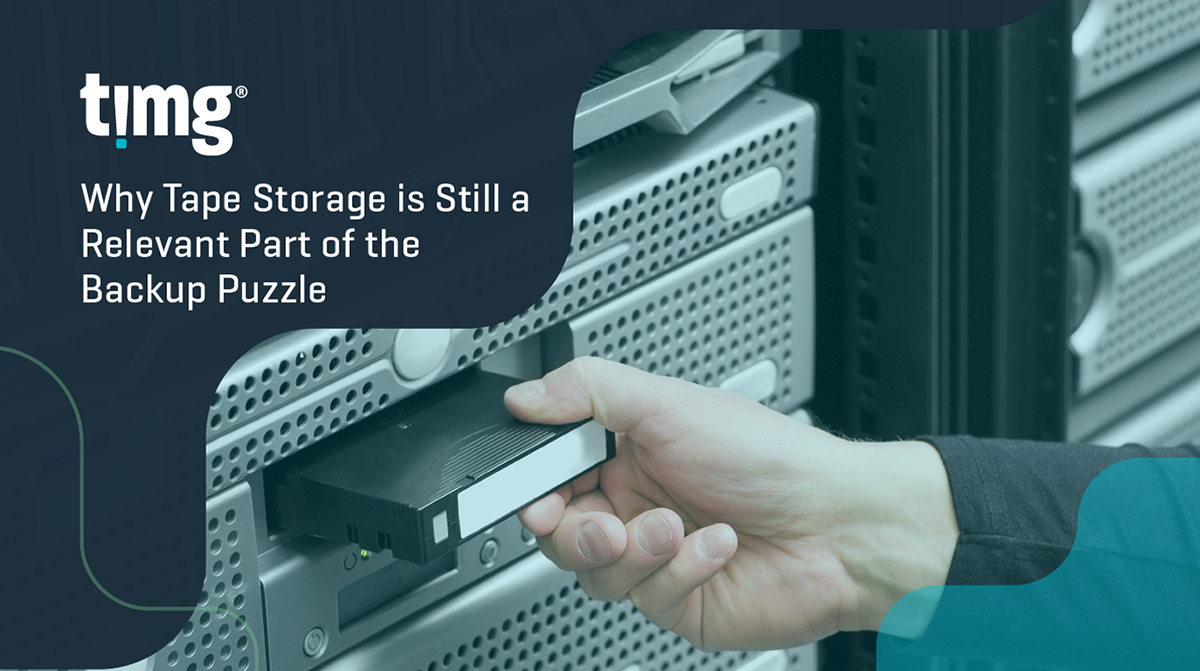Why Tape Storage is Still a Relevant Part of the Backup Puzzle
Why Tape Storage is Still a Relevant Part of the Backup Puzzle The cost of lost data can be staggering; far greater than the cost of putting in place a robust data protection plan. In…

Why Tape Storage is Still a Relevant Part of the Backup Puzzle
The cost of lost data can be staggering; far greater than the cost of putting in place a robust data protection plan. In addition to costs due to downtime, legal liability is a factor for some records.
To protect your company data, tape is an important part of any data protection plan.
The Benefits of Tape Storage
While other storage options, including disk drives, CD-ROM, and DVD, are designed for varying applications, tape drives and media are designed specifically for critical data backup. Characteristics of tape include:
- Mobility. Storing tape off site is standard procedure. Tapes can be stored for many years and can be read or overwritten with any compatible drive.
- Affordability. Tapes cost less in terms of electricity and administration. Media is also affordable in the long term.
- High capacity. Relative to CD/DVD technology, tape offers more capacity on a single piece of media. LTO7 Ultrium tapes can have a capacity of 6.0 TB native and up to 15 TB compressed.
- Compliant Storage. Tapes can be stored for 30+ years, which also helps businesses meet industry and legal data retention requirements.
- Durability. CD and DVD media are exposed to scratches and fingerprints during normal handling and loading/unloading. Tape media is housed inside a plastic cartridge, minimising the threat of damage to the media.
- Reliability. Tapes come with less risk as they are not able to be hacked or infected with a virus or worms.
Corporate data may exist on several different storage technologies. However, tape is usually the ‘last line of defence’ to restore data that does not exist in any other form. That’s why it’s important to follow best practice and choose a reliable, robust tape technology to protect your most valuable asset – your data.
Don’t put your data in danger: Always buy new media, and retire what’s old.
Your overall backup strategy should include plans to retire media periodically, based on length of time in service, number of uses or read/write error rates. Copy data from old tapes onto new tapes before disposing of them. And when purchasing new media, be sure to check that the security seal is unbroken.
In addition, though tape media and drives are extremely robust, lack of proper drive care and poor media management can compromise reliability. Many companies prefer to outsource so they don’t have to manage media storage policy and procedure.
When you outsource your tape storage, we look after the details:
- Tape Media and data management policy and structure
- Environmental controls (storage, operation and transportation)
- Store media in specially designed racks or storage boxes
- Periodic clinical cleaning of the storage areas
- Observe media labelling recommendations
- Data disaster and recovery procedures
- Monitor system and performance statistics and records
- Secure and control access to data and media
- Take care in handling
- Store media vertically
- Ensure that media and drives are kept clean.
 Your browser is very old. It's so old that this site will not
work properly as it should.
Your browser is very old. It's so old that this site will not
work properly as it should.